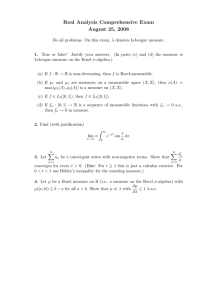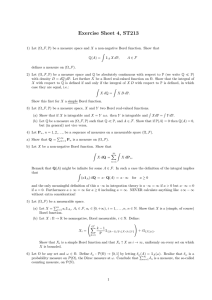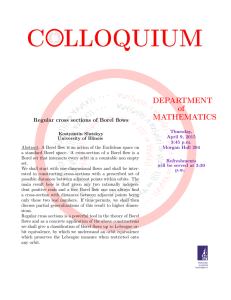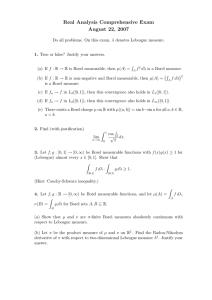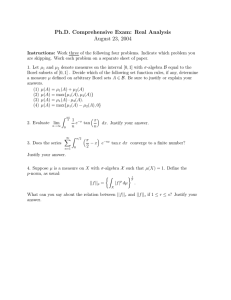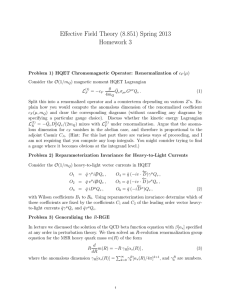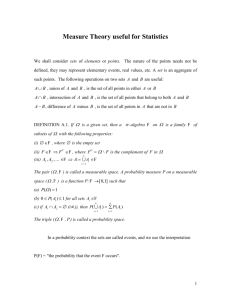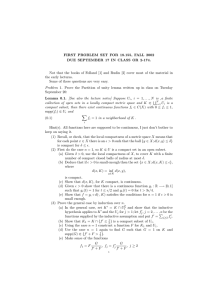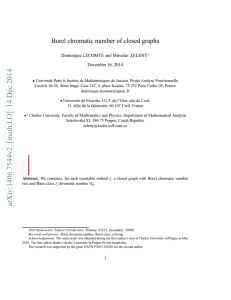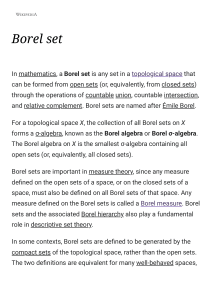1. Let K be a compact space, µ and ν... representations of C(K) by multiplication operators on L
advertisement
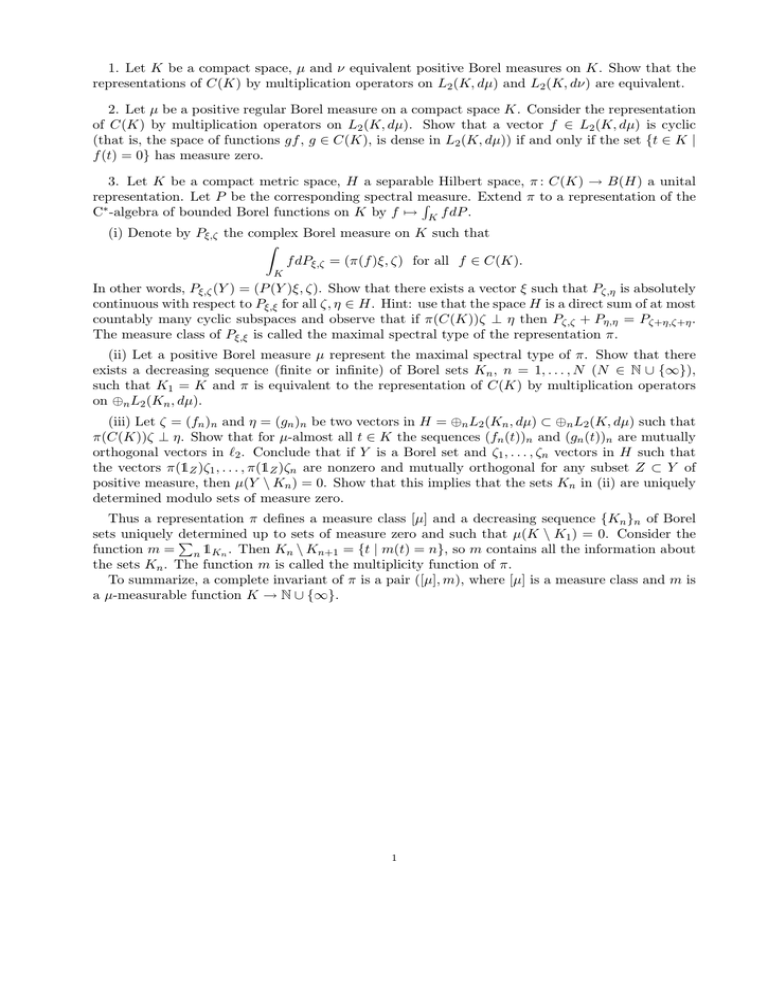
1. Let K be a compact space, µ and ν equivalent positive Borel measures on K. Show that the
representations of C(K) by multiplication operators on L2 (K, dµ) and L2 (K, dν) are equivalent.
2. Let µ be a positive regular Borel measure on a compact space K. Consider the representation
of C(K) by multiplication operators on L2 (K, dµ). Show that a vector f ∈ L2 (K, dµ) is cyclic
(that is, the space of functions gf , g ∈ C(K), is dense in L2 (K, dµ)) if and only if the set {t ∈ K |
f (t) = 0} has measure zero.
3. Let K be a compact metric space, H a separable Hilbert space, π : C(K) → B(H) a unital
representation. Let P be the corresponding spectral measure.
Extend π to a representation of the
R
C∗ -algebra of bounded Borel functions on K by f 7→ K f dP .
(i) Denote by Pξ,ζ the complex Borel measure on K such that
Z
f dPξ,ζ = (π(f )ξ, ζ) for all f ∈ C(K).
K
In other words, Pξ,ζ (Y ) = (P (Y )ξ, ζ). Show that there exists a vector ξ such that Pζ,η is absolutely
continuous with respect to Pξ,ξ for all ζ, η ∈ H. Hint: use that the space H is a direct sum of at most
countably many cyclic subspaces and observe that if π(C(K))ζ ⊥ η then Pζ,ζ + Pη,η = Pζ+η,ζ+η .
The measure class of Pξ,ξ is called the maximal spectral type of the representation π.
(ii) Let a positive Borel measure µ represent the maximal spectral type of π. Show that there
exists a decreasing sequence (finite or infinite) of Borel sets Kn , n = 1, . . . , N (N ∈ N ∪ {∞}),
such that K1 = K and π is equivalent to the representation of C(K) by multiplication operators
on ⊕n L2 (Kn , dµ).
(iii) Let ζ = (fn )n and η = (gn )n be two vectors in H = ⊕n L2 (Kn , dµ) ⊂ ⊕n L2 (K, dµ) such that
π(C(K))ζ ⊥ η. Show that for µ-almost all t ∈ K the sequences (fn (t))n and (gn (t))n are mutually
orthogonal vectors in `2 . Conclude that if Y is a Borel set and ζ1 , . . . , ζn vectors in H such that
the vectors π(1Z )ζ1 , . . . , π(1Z )ζn are nonzero and mutually orthogonal for any subset Z ⊂ Y of
positive measure, then µ(Y \ Kn ) = 0. Show that this implies that the sets Kn in (ii) are uniquely
determined modulo sets of measure zero.
Thus a representation π defines a measure class [µ] and a decreasing sequence {Kn }n of Borel
sets uniquely determined
up to sets of measure zero and such that µ(K \ K1 ) = 0. Consider the
P
function m = n 1Kn . Then Kn \ Kn+1 = {t | m(t) = n}, so m contains all the information about
the sets Kn . The function m is called the multiplicity function of π.
To summarize, a complete invariant of π is a pair ([µ], m), where [µ] is a measure class and m is
a µ-measurable function K → N ∪ {∞}.
1
